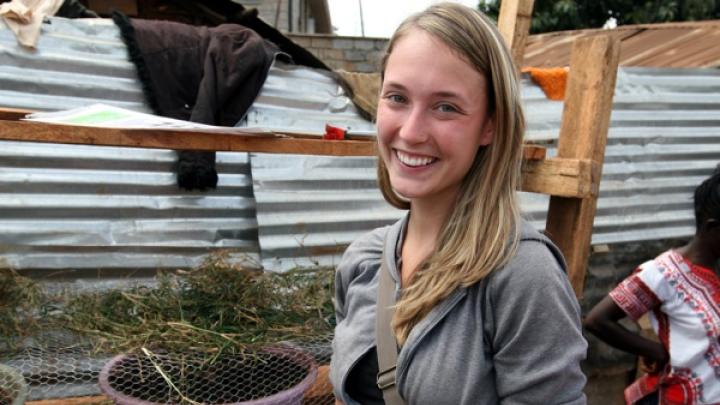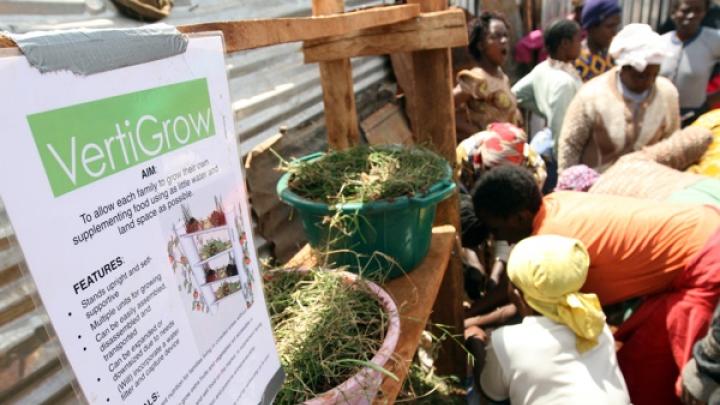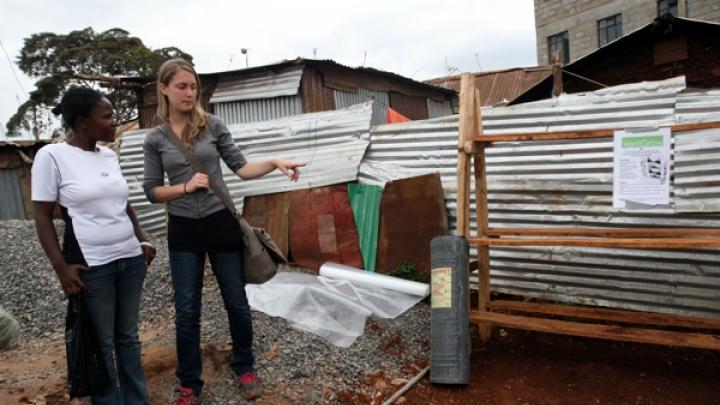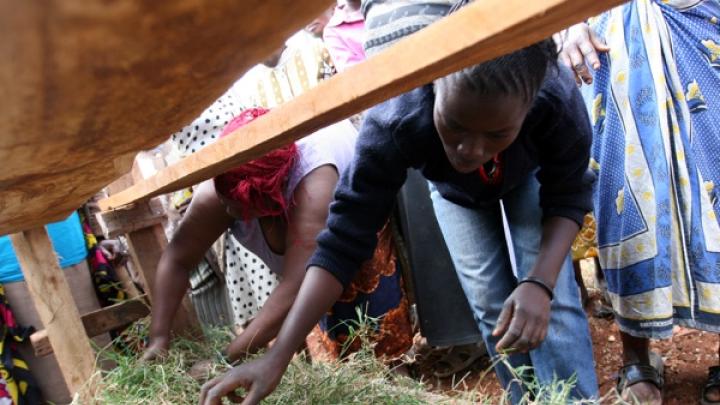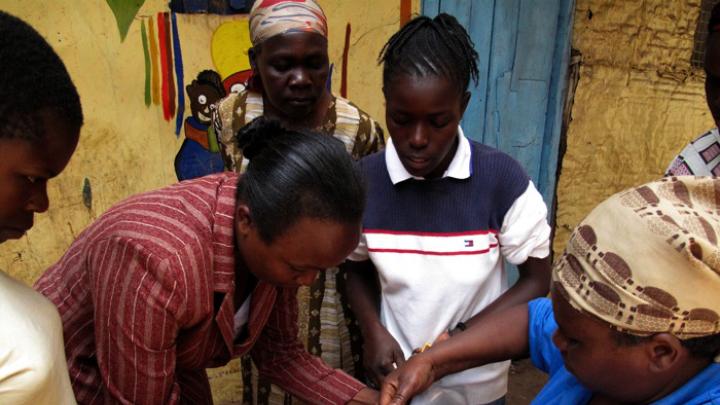It’s important to be fleet of foot in Kibera. Traversing trash piles, bobbing and weaving along the edges of open sewers, one must take care to step on dry ground whenever possible. Kibera, a section of Nairobi reputed to be Africa’s largest slum—no one really knows, as population estimates range from 300,000 to 1.3 million—is a place even many Kenyans fear to go.
Elizabeth Nowak ’10 isn’t entirely sure why. Visiting Kibera last summer to test VertiGrow—a planter designed to take advantage of vertical space so “you don’t have to have a lot of land in order to grow food”—she found the residents friendly and welcoming. Despite the lack of street signs, or even streets, she learned her way around within a few days, hopping nimbly back and forth through the lanes, the sun flashing off her blond hair.
Nowak designed VertiGrow with her classmates Windsor Hanger and Yongtian Tina Tan in the “Idea Translation” course. The course also connected them to Rye Barcott, M.B.A.-M.P.A. ’09, who during his own undergraduate days at the University of North Carolina had founded Carolina for Kibera (CFK), a non-governmental organization (NGO) whose credo is, in his words, “The poor have the solutions to the problems they face.” Barcott agreed to connect Nowak with CFK social workers who could translate for her and make introductions in the community; with funding from the Harvard Initiative for Global Health, she was on her way.
Nowak, a pre-med African studies concentrator in Pforzheimer House who is writing a thesis on technology in the developing world, initially planned to conduct surveys, gathering information for a follow-up visit in January. As she traveled from home to home in the slum’s Gatwekera section, she told people about the planter idea. One day, two women showed up at the Gatwekera clinic looking for her. They said they wanted to get started.
Not wanting to squander this enthusiasm, Nowak hastily reworked her plan. Remembering Barcott’s words, she let the women of Gatwekera decide which materials to use and which seeds to plant. The VertiGrow team still plans a January trip, but now the goal is to follow up on the three planters Nowak left behind with seeds already sprouting. Meanwhile, in Cambridge, they are mulling production and distribution models to determine whether VertiGrow makes more sense as a set of instructions for a product constructed where it will be used, or as a finished product constructed elsewhere and then bought by or donated to people in developing countries.
Nowak was never sure what she would find each day when she arrived at the designated construction sites for the planters in Kibera. But she says her approach of letting the residents take the lead resulted in a product that merges the undergraduates’ ideas with local preferences and customs in a way that something designed wholly in a Harvard classroom never could.
“It’s kind of cool to come in with an idea and see that they’re already doing that, or they have a better idea,” she said one August morning, looking around and surveying the women. One stood cracking rocks with a sledgehammer, hacking them down to a suitable size for use in a planter. Another was extricating garbage from a large pile of dirt that would be used for planting; the garbage would be burned to heat a knife for cutting water-runoff holes in the tough plastic of the planting tubs. In the resourceful fashion typical of Kibera, nothing would go to waste. Said Nowak: “They come up with things I never would have thought of.”
Read a UN World Food Programme article on VertiGrow
Visit the Carolina for Kibera website
